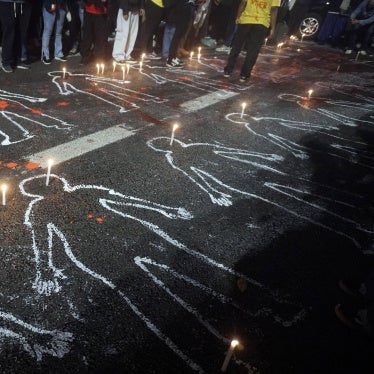Shot, dumped into the trunk of a police car, then dragged for 300 metres, the police “rescue” of Cláudiada Silva Ferreira has rightly caused outrage across Brazil. The police claim the 38-year-old resident of the Favela Madureira in Rio de Janeiro was placed in the trunk of the car to save her life; instead, she ended up dead on arrival at the state Hospital Carlos Chagas.
Officials moved swiftly. Rio’s Military Police Commander said the officers’ conduct was not consistent with the institution’s commitment to the preservation of life and human dignity. State governor Sérgio Cabral said the officers behavior was “disgusting” and President Dilma Rousseff expressed solidarity with Cláudia’s family. The three officers involved were arrested on "disciplinary transgression" charges and await trial.
Yet the statements by political leaders and ongoing investigation of Ferreira’s death have not dampened public outrage and criticisms of Rio’s police forces. Why not?
One likely reason is that Brazilians recognize that Ferreira’s shooting and “rescue” by the police—while more grisly than most—was hardly an isolated incident. The “false rescue” is a known cover-up technique in which policetake the corpses of their shooting victims to hospitals in order to destroy crime scene evidence under the false pretext of attempting to rescue them. And while the opening of an investigation into the circumstances of Ferreira’s killing is encouraging, Rio officials have not proposedconcretemeasures to prevent further false rescues and other forms of police cover-ups.
In this matter, São Paulo state has taken a major step. In January 2013, the São Paulo Public Security Secretariat issued a policy requiring police to contact emergency response teams to provide assistance and treatment to shooting victims. It prevents police from removing victims from where they were shot –unless emergency services were not available to respond or the police have express authorization from the Military Police Operations Center. In the following months, police killings in the state fell by almost 40 percent.
Rio has also implemented several public security policies with the potential to promote more effective policing and reduce abuses, including a program, which grants financial compensation for meeting reduction targets for crimes and acts of violence, including police homicides. This innovative program has been taken into account in the design of similar policies in other parts of Brazil, including São Paulo, which recently sent a bill to the state legislature to obtain funding for its own police tracking and incentive program, after months of discussion with public security experts.
However, unlawful police killings and impunity remain serious problems in both states. The local governments need to redouble their efforts to address them, and would do well to learn from one another. For São Paulo, that means ensuring that all intentional homicides – whether committed by drugs gangs, petty criminals or police – affect the new crime reduction targets. For Rio, it means following São Paulo’s lead in requiring that police involved in shootings immediately contact emergency response teams rather than transport victims to hospitals themselves.







